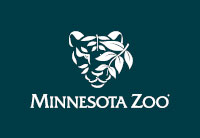 by the World Parrot Trust, Bolivia
by the World Parrot Trust, Bolivia
The blue-throated macaw is the highly-threatened relative of the blue-and-gold macaw. Unlike the larger blue-and-golds, found throughout tropical South America, the blue-throats are found only in north-central Bolivia. Although there have been effective efforts to study and protect this species since its discovery in the wild in 1992, the World Parrot Trust is now conducting a full-fledged field conservation program for this species.
The blue-throated Macaw is one of the rarest birds in the world. Recent estimates put the wild population at several dozen birds and captive estimates from several hundred to the low thousands. Although blue-throats appear to be like many other macaws specializing on one or two species of palm for food and nesting requirements, it was apparently not this habitat specialization that drove them to the brink of extinction. A great deal of their habitat still exists and is highly compatible with cattle ranching in central Bolivia.
Blue-throats biggest challenge has been a dramatic and well-documented pet trade. Although the exact location of the wild birds had been a mystery to ornithologists for decades, trappers apparently discovered the wild birds sometime in the late 1970’s – early 1980’s. During the early 1980’s – early 1990’s, 400-1,200 birds were exported from Bolivia, many of which are now in captivity in Europe and North America. It was not until 1992 that the last wild birds were discovered by Charles Munn, who posed as a wildlife filmmaker and was led to the site by an ex-trapper. By then Bolivia had banned bird export, the Wild Bird Conservation Act had been signed in the US, and the last remaining trapper had been converted to a guide/protector of the blue-throats. Conservation efforts for the blue-throated macaw have focused on looking for more birds, protecting a handful of nest sites (usually three to four), and continuing to support ex-poachers to protect remaining birds.
The immediate goal is to “locate, protect, and encourage the survival and successful breeding of the wild birds”. The research team is trying to determine factors that contribute to successful breeding and fledging, as well as factors that limit success. Nest competition, predators, weather and diet components are also being studied. Since most wild blue-throated macaws exist on privately-owned cattle ranches, public relations and awareness must be an ever present element for the field team. Native Bolivians are being asked to participate in this ongoing research as a way of providing incentive for the local people to conserve this highly endangered species.
The Ulysses S. Seal Conservation Grant Program funded this project in 2006, 2007, and 2009. Staff champion for this project is Dave Cruz, World of Birds Show Supervisor.



Get Social